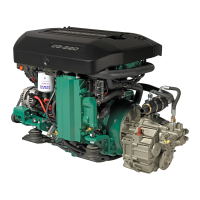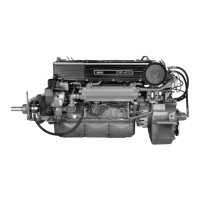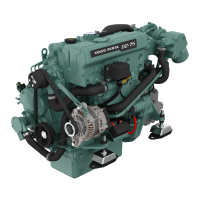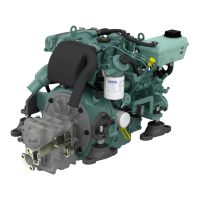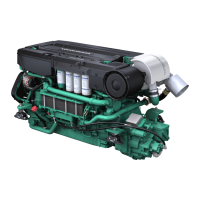28
Power tilt operation
Tilting is normally used for raising the drive unit to obtain clearance when beaching,
launching from a trailer, or mooring. When tilting the drive unit, the boat should be at rest or
at idle speed only.
Never exceed 1000 RPM when operating the drive unit in the tilted position, because it may damage the drive
system. Never run the engine when the drive unit is tilted more then 30° or the drive will be damaged.
To avoid possible contact with the propeller, never use the drive unit as a ladder or as a lift to board the boat.
Never board at the rear of the boat when the engine is running, even if the engine is operating in neutral.
Personal injury could result from contact with rotating engine parts and propeller.
Any malfunction of the trim/tilt system could result in a loss of impact protection. Malfunction can also result
in loss of reverse thrust capability. If malfunction occurs, see your authorized Volvo Penta dealer.
For twin installations, if the drives need to be trimmed or tilted, both drives must be moved at the same time
(i.e., parallel) to prevent unnecessary stress on the tie rod between the drives. When trimming/tilting in
parallel, both drives must be trimmed to their full
DOWN
position first. Start trimming/tilting from this
position.
Shifting and controlling speed___________________________________________________
IMPORTANT
Carefully check the function of all control and engine systems before leaving the dock.
1. Move the remote control handle to the
NEUTRAL
detent (idle) position. This will engage
NEUTRAL START
switch
and allow engine to start. Check in front and behind boat for people or obstructions before shifting.
2. Do not shift if engine speed is above 750 for DPX 500, or 850 RPM for DPX 600.
3. To go
FORWARD
- Actuate the
NEUTRAL
lock mechanism and move the shift handle forward. Throttle move-
ment will begin after the
FORWARD
gear engages.
4. To go in
REVERSE
- Actuate the
NEUTRAL
lock mechanism and move the shift handle rearward. Throttle move-
ment will begin after the
REVERSE
gear engages.
5. To go from
FORWARD
to
REVERSE
, or
REVERSE
to
FORWARD
, always pause at
NEUTRAL
and allow engine
speed to return to idle. Do not shift from
FORWARD
to
REVERSE
when the boat is planing.
6. After shifting is completed, continue to move the control handle slowly in the desired direction to increase speed.

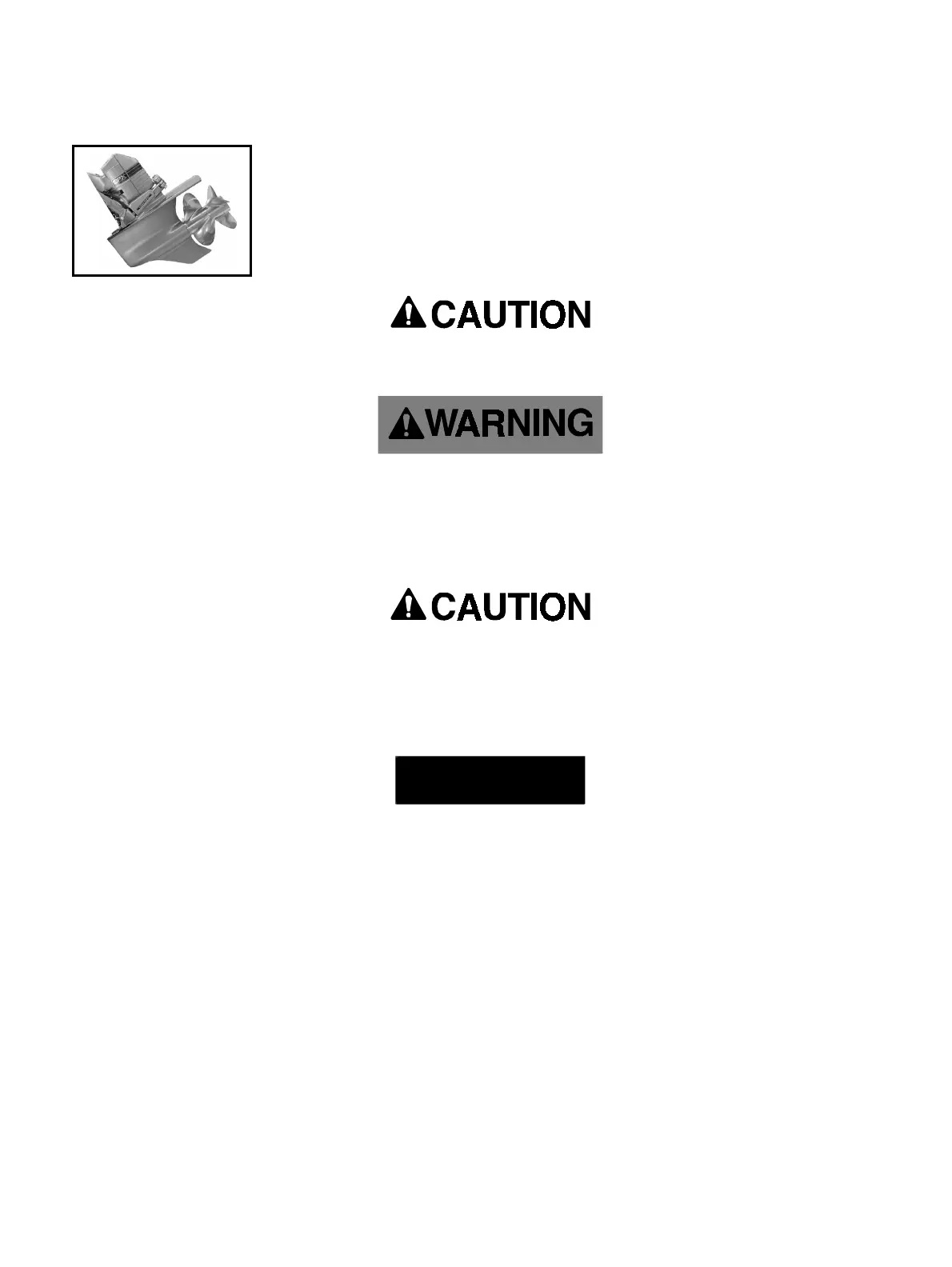